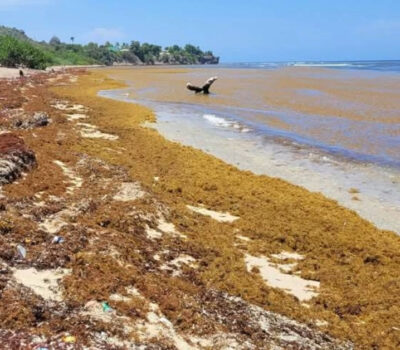The Federal Commission for the Protection against Sanitary Risks ( Cofepris ) announced that 99.5% of Mexico’s beaches are classified as suitable for recreational activities. The 198 approved beaches meet the safety levels for enterococci established by the World Health Organization ( WHO ).
Through a statement, Cofepris explained that in coordination with state health authorities and the National Network of Public Health Laboratories, they completed more than 1,300 water samples from 199 beaches in 57 tourist destinations in the 17 coastal states.
“The results of the tests carried out with seawater indicated that 198 beaches are suitable for recreational use since they meet the requirement of having 200 or fewer enterococci per 100 milliliters of water,” the agency explained.
On the other hand, Playa Hermosa in Ensenada, in Baja California, was the only beach that exceeded the limits established by the WHO.
“Playa Hermosa, in Ensenada, Baja California, exceeded the limits established by the most probable number methodology (MPN), 200 MPN / 100 milliliters of enterococci, which is why it is considered as a beach not suitable for recreational use,” according to the report.
Despite the good results for the beaches, the statement stressed that it does not mean that there is safety when attending them. This is due to the COVID-19 pandemic, which has already started its third wave in the country.
“It is important to follow the measures recommended by the state and municipal governments, as well as the indications of the health ministries at the federal and state level about the use, mobility, and coexistence in public spaces,” they stressed.
Due to Tropical Storm Dolores and Hurricane Enrique, as well as the presence of low-pressure areas, in some states, it prevented the sampling in some areas of the Republic.
“Three beaches in Tonalá, Chiapas, did not present results, as did none of the 31 beaches in Guerrero; 10 from Jalisco; 13 from Michoacán; and 15 from Oaxaca. When the meteorological conditions allow it, the authorities will carry out the samplings and inform the public,” they reported.
In March, testing from COFEPRIS indicated bacterial levels between Los Muertos Beach and Cuale Beach reached above the recommended level for recreational use. Los Muertos Beach registered 266.47, Cuale Beach registered 296.21. The acceptable amount of bacteria levels for recreational use are under 200/100ml. At the time, COFEPRIS recommend users not to enter the water of Loa Muertos Beach and Cuale just days before Santa Semana week.
According to the statement, these tests have been done since 2003 to analyze the quality of water in tourist centers. This, in turn, guarantees the protection of the health of visitors.
Beaches with restrictions due to the pandemic
Due to the alarming increase in COVID-19 cases in Baja California Sur, beach closures and various activities were applied in La Paz and other entities to prevent further infections.
Last week, the increase in COVID infections affected mostly young people with 116 deaths: 92 deaths from 30 to 39 years old and 24 from 20 to 29 years old. In addition, there were 230 hospitalized children, of which there were five deaths.
This also coincides with a high degree of refusal to be vaccinated on the part of the young people of Baja California Sur, since among them there is mistrust of certain laboratories that produce the vaccines. For this reason, a preference was generated for the Pfizer reagent which they expected to reach the state.
The delegate of the Bahía Tortugas fishing community, Isabel Vega, pointed out that for a couple of weeks the communities Bahía Tortugas, Punta Abreojos, La Bocana and Bahía Asunción, in the North Pacific Zone of the state, agreed to a voluntary curfew from 10 o’clock at night.
The Federal Commission for the Protection against Sanitary Risks ( Cofepris ) announced that 99.5% of Mexico's beaches are classified as suitable for recreational . . .












